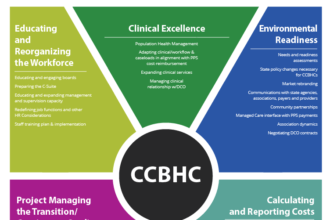This is a joint post with Denizhan Duran, and it originally appeared on The Atlantic.
This is a joint post with Denizhan Duran, and it originally appeared on The Atlantic.
On September 20, heads of state and officials from every country in the world will meet at the United Nations to discuss the non-communicable diseases (NCD) — heart disease, cancers, diabetes, and asthma — that are responsible for 63 percent of global deaths annually. Contrary to popular belief, NCD do not primarily affect those of us living in wealthy countries; rather, 80 percent of NCD deaths occur in developing countries, mostly the middle-income countries.
Economic losses in the middle-incomes are likely to be significant. In 2005, China lost 0.31 percent of its GDP to NCD, India lost 0.35 percent and Russia lost 1.13 percent, according to the WHO. These numbers are expected to double or triple by 2015, when Russia is expected to lose up to 5.34 percent of its GDP. Each 10 percent increase in NCD burden is associated with a 0.5 percent reduction in annual economic growth. The opportunity costs of ignoring NCD are high: the World Bank finds that reducing cardiovascular disease mortality by one percent per year between 2010 and 2040 would generate a 68 percent increase in China’s real GDP.
Yet the costs of NCD are not only macroeconomic, but in the impact that these illnesses have on poor families. On top of wage losses due to illness or care-taking, for those few people who actually sought health care, spending on NCD was 70 percent of the average monthly income for the poor in India. Similar results are found elsewhere.
NCD will only worsen as the middle-incomes continue to grow: greater levels of tobacco use, physical inactivity, unhealthy diets and alcohol use go hand-in-hand with economic growth and are the main culprits in increasing NCD burden. As urbanization intensifies, people’s behaviors change, shifting towards alcohol abuse, tobacco use, unhealthy eating habits, sedentarism, and stress. In China, NCD burden is expected to increase by at least 40 percent by 2030. If current trends continue unchecked, the WHO estimates that NCD deaths will increase by 15 percent globally between 2010 and 2020.
Thankfully, NCD can be substantially reduced with simple, low or no-cost interventions (see our recent low-cost suggestions here). The WHO outlines “best buys” that even the poorest countries can afford to implement: legislation for tobacco and alcohol control, as well as reducing and controlling the dietary intake of salt and trans-fats. Implemented together, the World Bank estimates that over 50 percent of the NCD burden in developing countries could be averted. Similarly, strengthening primary care, reducing economic barriers to access, and shifting focus from expensive late-stage treatment to population-level prevention are efficient ways to combat with NCD.
Yet middle-income countries are not implementing these simple interventions at scale. Although 92.4 million Chinese adults suffer from diabetes — a population equivalent to the entire country of the Philippines, only 39 percent have been diagnosed. While cervical cancer is the second most common cancer in women, crude coverage of cervical cancer screening in developing countries is on average 45 percent, less than half of developed country coverage. In India, coverage is less than 10 percent of all eligible women. Similarly, 39 percent of total deaths in Mexico from 2000 to 2004 are classified as “avoidable” by their own Ministry of Health, most due to NCD.
The reasons behind these shocking health system failures are complex, but have little to do with money. Increasing demand for curative instead of preventive care, growing pharmaceutical and medical device industry pressures, and a simple lack of priority are the main culprits. Middle-income economies are also attractive markets for tobacco and alcohol producers. In Russia, half of adult deaths between 1990 and 2001 have been attributed to alcohol abuse, yet the government has only recently classified beer as an alcoholic drink. In China, where almost 300 million people smoke, the government actually produces and sells its own citizens cigarettes and other tobacco products.
Some advocates are calling for an increase in global health funding from global and multilateral donors. While it would be nice to see the global health funding pie grow (and increase from three percent for NCD prevention), the NCD problem in middle-income countries just isn’t about funding — especially in a time when budget cuts are the norm. Until the middle-incomes seize leadership, international aid and the interventions they pay for will not be effective. Middle-incomes must honestly and rigorously assess whether the human and economic costs of ignoring simple low-cost interventions makes sense, and the international community can help by continuing to collect and publish data on NCD, establishing specific disease control goals and helping with priority-setting efforts.
This is a joint post with Denizhan Duran, and it originally appeared on The Atlantic.








